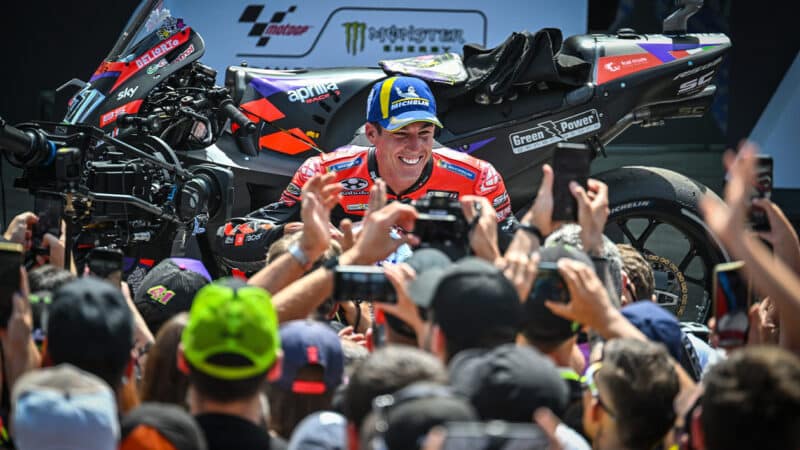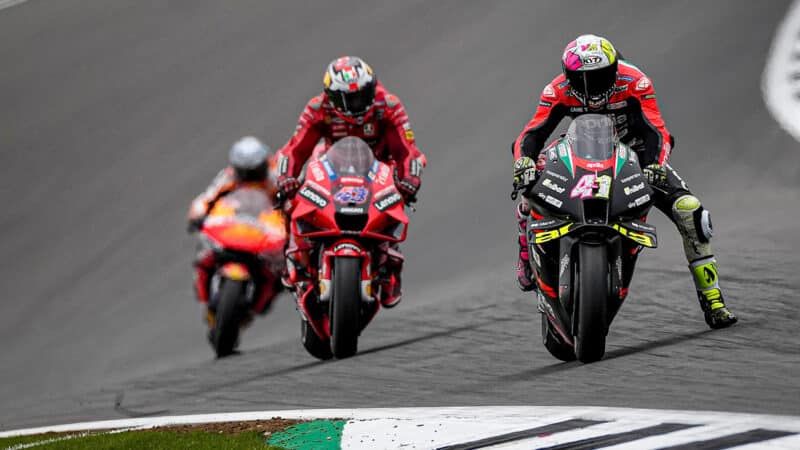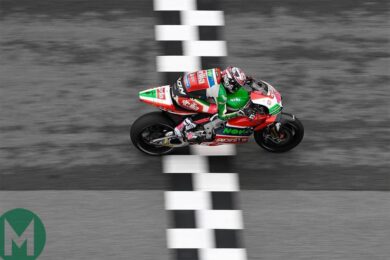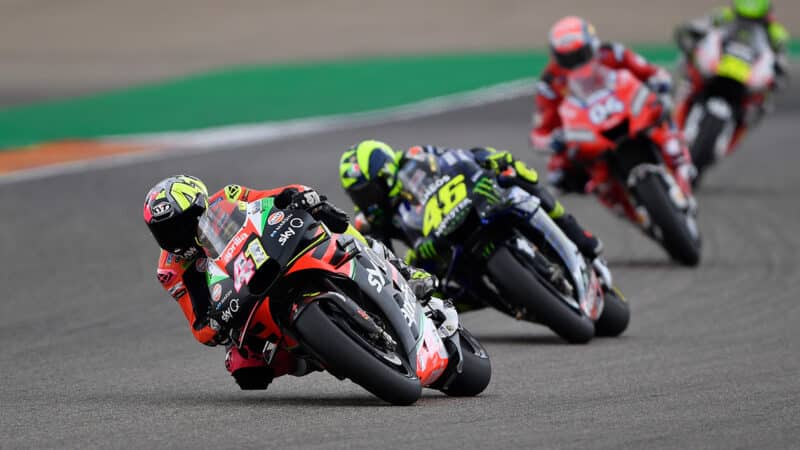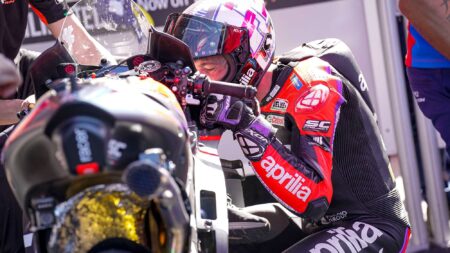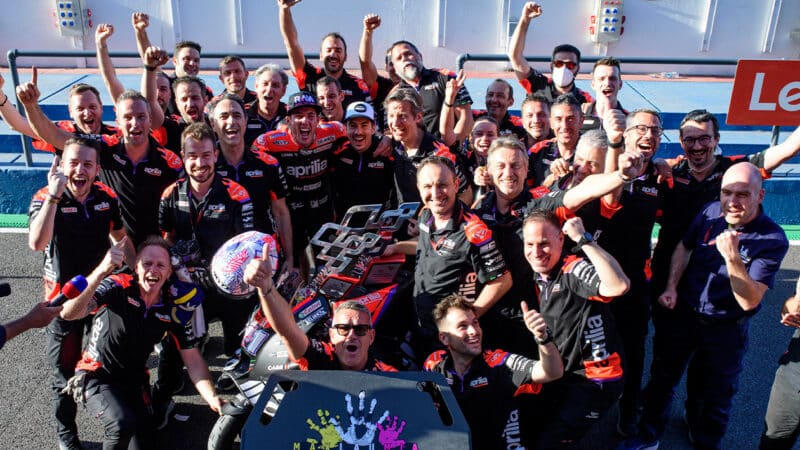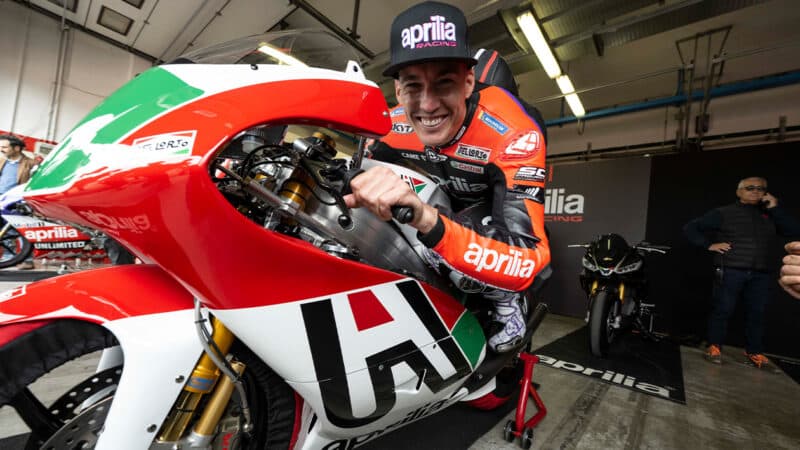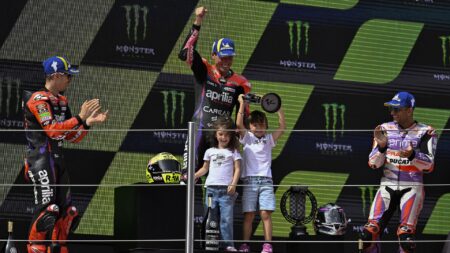Top racers have a superhuman ability to focus and compartmentalise – to ignore things that would gnaw away at the minds of mere mortals – so despite the fact Espargaró had already decided to stop risking life and limb for a living, he took pole position and the sprint race at Catalunya last weekend.
This is what racers call being in the zone and psychologists call the state of flow or optimal functioning. It’s when your subconscious takes over from your conscious and it’s a weird feeling, like an out-of-body experience. Everything seems to slow down and yet you’re riding faster than ever.
“There’s a moment when you are riding at the limit that you don’t know if you are here or you are in China,” explained Espargaró after his Catalan sprint victory. “You are focused, full focus, then when you pick up the bike out of the last corner you realise you are at your home circuit and you are winning the race.”
MotoGP isn’t as dangerous as it was half a century ago but the death rate has increased in recent years, with four fatalities over the last decade and a half. And however safe MotoGP may be now, travelling at 220mph on a motorcycle, with rivals to the left of you and rivals to the right of you, is never going to be anything less than dangerous, whether it’s FP1 or race day. Which, of course, is one reason why some of us love it.
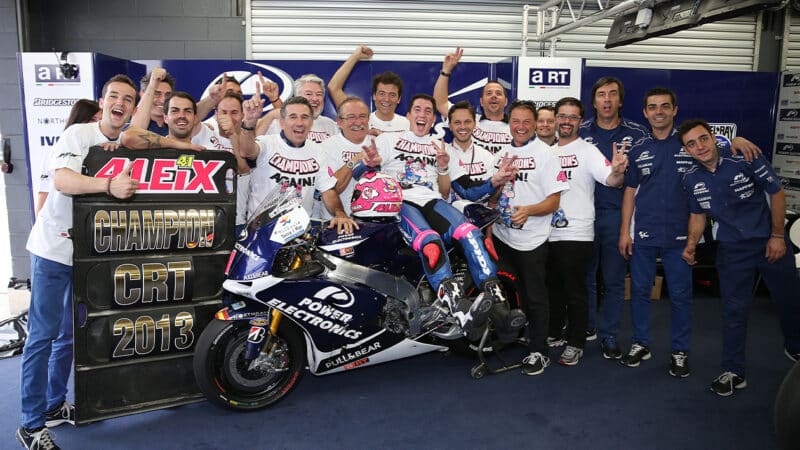
Espargaró revealed his MotoGP talent for the first time when he rode a low-spec ART with Team Aspar in 2012 and 2013
Team Aspar
When Espargaró announced his decision at Catalunya it closed the circle, because he was born and grew up in nearby Granollers, where he used to sit in class, listening to bikes roaring around the newly built circuit (which hosted its first GP just before his third birthday) and dreaming that one day it would be him making the noise.
During his retirement media conference the tears flowed freely. And not only from the man himself. You might think that Jorge Martin and Marc Márquez are lean, mean killing machines (and you’d be right) but both were moved to tears. It was a bit like they were losing a much-loved uncle.
Espargaró will be missed, especially by us journalists. Sports journalists like to write stories that bring sport alive. Motor sport is a wonderful mix of cutting-edge technology, remarkable human endeavour and giddy romance. Valentino Rossi became a global superstar because his career was an unlikely fairytale – even he sometimes used the word ‘romantic’ when he talked about racing.
It’s always been a delight to talk with Espargaró. I’ll miss him a lot.

